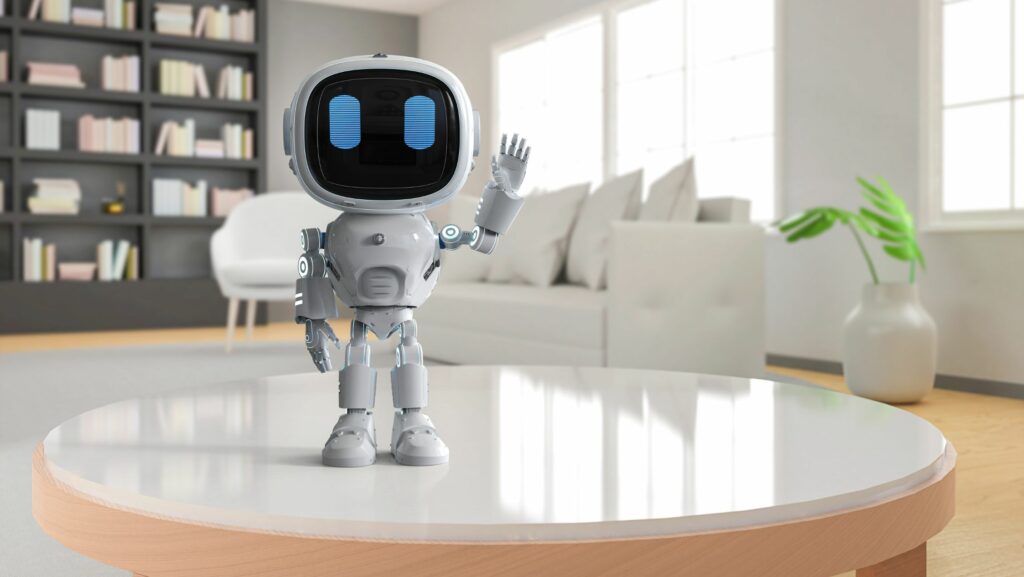In the realm of architecture and home design, artificial intelligence is making waves. It’s transforming the way we visualize, plan, and execute home exterior designs. Imagine having a free AI tool at your fingertips that could create stunning, personalized exterior designs for your home!
This isn’t just a pipe dream. Today’s AI-driven design tools are becoming more accessible and user-friendly, offering homeowners the opportunity to play architect. They’re capable of generating designs that are not only aesthetically pleasing but also practical and efficient.
In this article, we’ll delve into the exciting world of AI home exterior design. We’ll explore how these free tools work, their benefits, and how they’re revolutionizing the home design industry. Buckle up for a journey into the future of home design.
AI Home Exterior Design Free
 As a rising trend in the architecture and home design industry, AI—short for Artificial Intelligence—plays a pivotal role in revolutionizing the process of creating home exterior designs. This transformation includes not only the visualization but also the planning and execution of designs. The following sections unravel the concept of AI in home exterior design and the merits it offers.
As a rising trend in the architecture and home design industry, AI—short for Artificial Intelligence—plays a pivotal role in revolutionizing the process of creating home exterior designs. This transformation includes not only the visualization but also the planning and execution of designs. The following sections unravel the concept of AI in home exterior design and the merits it offers.
AI home exterior design refers to the application of machine learning and complex algorithms to facilitate the process of designing a home’s exterior. Empowered by AI, these design tools analyze a user’s preferences and constraints to generate a custom, optimized design. They offer real-time visualizations, instant modifications, and multi-faceted design considerations, including material preferences, climate conditions, and local regulations. For instance, a user might input their desired color scheme, building material preferences, and regional weather patterns. The AI-powered tool then generates a design that creatively and effectively brings these factors together.
Benefits of AI-Driven Design Solutions
AI-driven design solutions present a crop of benefits to the user, revolutionizing the traditional approach to architectural design.
Unquestionably, AI’s role in home exterior design points towards a future that holds unlimited potential for the home design industry – a future where homeowners possess complete control over the aesthetics, functionality, and sustainability of their domiciles.
Key Features of Free AI Home Exterior Design Tools
 As evidenced in the previous section, AI revolutionizes home exterior design with a plethora of features that take user experience to an entirely new level. The mentioned tools offer not only visual creativity but also practicality. Within this intricately woven web of advantages, the primary features stand out as user-interface and ease of use, and range of design options.
As evidenced in the previous section, AI revolutionizes home exterior design with a plethora of features that take user experience to an entirely new level. The mentioned tools offer not only visual creativity but also practicality. Within this intricately woven web of advantages, the primary features stand out as user-interface and ease of use, and range of design options.
Range of Design Options
The spectrum of design options offered by AI tools exemplifies the concept of limitless creativity. From an array of color palettes, architectural styles, to different types of materials and textures, these tools house a virtual world of possibility. Users can experiment with various styles – be it contemporary, traditional, or a fusion of both, and preview how they might look. The AI algorithms study the user’s design patterns and recommend styles that meet their taste. Furthermore, the ability to perform real-time modifications allows users to tweak their designs effortlessly and instantaneously, propelling their creative freedom to infinite bounds.
Analyzing the Effectiveness of Free AI Tools
 AI-powered exterior design tools redefine home aesthetics. They promise users a holistic architecture experience at no cost. Their effectiveness, though, often comes into question. To evaluate this, a deeper look into the accuracy of AI recommendations and a comparison with professional architectural services is necessary.
AI-powered exterior design tools redefine home aesthetics. They promise users a holistic architecture experience at no cost. Their effectiveness, though, often comes into question. To evaluate this, a deeper look into the accuracy of AI recommendations and a comparison with professional architectural services is necessary.
AI-driven tools harness vast databases, intricate algorithms, and cognitive computing to create exterior design recommendations. Guided by user input on variables like preferred materials, style, and function, these tools generate tailored recommendations. A key aspect of their efficiency lies in learning from past data. For example, algorithms analyze previous exterior designs, user preferences, and successful design scenarios, thereby improving the accuracy of their predictions.
Nevertheless, it’s critical to be mindful of certain design constraints that the AI may not fully comprehend like specific local regulations and peculiar architectural aesthetics that only meticulous human intervention can ensure.

